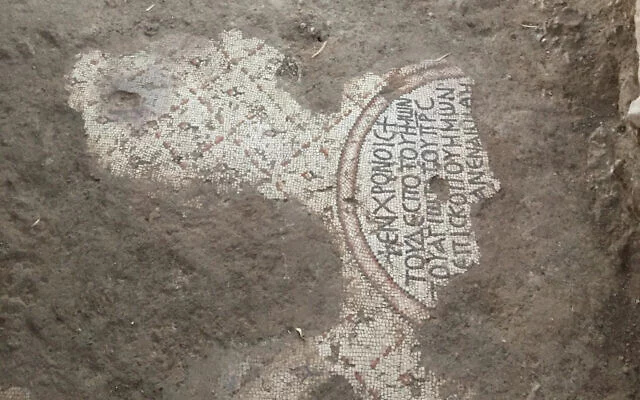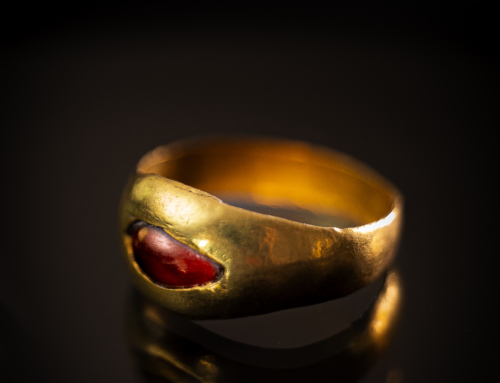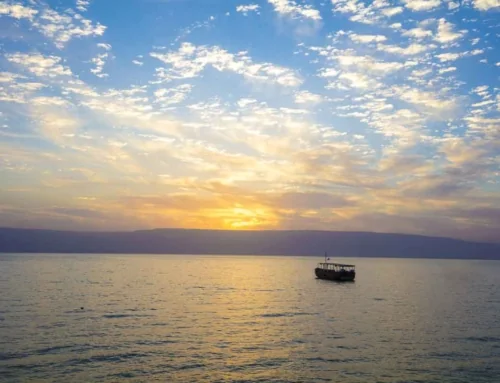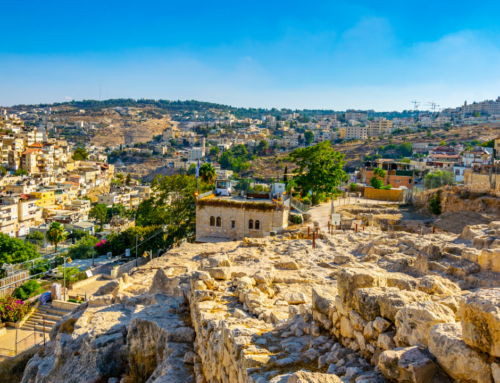Bethsaida is a Galilean town that is mentioned several times in the Bible by Jesus. The city has been considered to be in one location along the shores of the Galilee but there has been debate now over where the town actually was located. So where is the real Bethsaida?
History of Bethsaida
Bethsaida was a town along the shores of the Galilee and was a well known fishing town. In fact, the name actually means “House of Fishermen”. Three famous fishermen were from this town, the disciples Peter, Andrew and Phillip (John 1:44). This is also where Jesus healed the blind man (Mark 8:22-26) and nearby one of the most famous of the miracles of Jesus took place, the feeding of the five-thousand (Luke 9:10-11).
Bethsaida was also spoken of directly by Jesus in Matthew 11:21.
“Woe to you, Chorazin! Woe to you, Bethsaida! For if the miracles that were performed in you had been performed in Tyre and Sidon, they would have repented long ago in sackcloth and ashes.”
Bethsaida was upgraded to a City by King Herod’s son Phillip and named Bethsaida Julias in honor of Augustas’s wife. The city went on to survive the revolt but began a decline around the 3rd century and completely disappeared by the 8th century, with it’s exact location being lost to history.
Where is Bethsaida?
For generations Bethsaida over a thousand years Bethsaida has been a lost city, but not a forgotten one. People have long sought the area out, but for the past two-hundred years there has been disagreements as to where Bethsaida actually is. There are currently three places that are considered possible, to varying degrees; Et Tell, El-Araj, and Messadiye.
Et Tell
Et Tell is what for some time many people have believed was the location of Bethsaida. They came to this belief due to its location being in the general area as described by the great historians of the day, including Josephus. There were many excavations held in the area in which not only coins and artifacts dating to the time of Jesus, but also even further back into 1400 BC.
An interesting finding there is the “fisherman’s house”. A home where fishing equipment was found. This made some believe that this gives credence to this being Bethsaida due to it being a fishing town.
There are some problems with this site though. One is it doesn’t look like it had a very large population, which seems unlikely as it was promoted to a Roman city. There are also not a tremendous amount of Roman era artifacts in the area. It also seems fairly distant from the sea. The other issue is that there was a very well known church during the Byzantine era that was dedicated to the apostles, recorded in historical accounts. No remnant of this church has ever been located.
Messadiye
Messadiye is the least likely site, but still has it’s defenders. It is now a Bedouin village along the shores of the Galilee and near the mouth of the Jordan River. The problem is there haven’t been many artifacts around the area from before the Byzantine era.
El Araj
El Araj for some time was considered a spot of possibility when it comes to Bethsaida, but it also tended to be considered 2nd in the race for possible sites. That though has changed as time as history has revealed itself through archeological research.
El Araj for one is closer to the Sea of Galilee, being just across the water from other famous New Testament towns around the Galilee including Magdala, Caperneum and Tiberias.
While the geography and the topography lean in favor of El Araj, what does archeology show? Beneath a layer of Byzantine ruins, a solid layer of Roman-era ruins and artifacts have been found. These have included household items including oil lamps from the second temple period. Also found her coins that clearly date the layer. In addition to these, fishing tools have been discovered, denoting a tie to the fishing industry of the area.
The most exciting and possibly most affirming evidence of the area is a Byzantine era church. This may not seem particularly extraordinary, however there was an 8th century pilgrim who recorded his journey and described visiting Bethsaida. in his description, he noted a church build over the home house of Peter and Andrew. So was this the so-called “Church of the Apostles”?
While many thought it was certainly possible, it was not until 2022 in which a mosaic was discovered and restored, revealing a dedication message for the church. The inscription reads as a request for intercession from “chief and commander of the heavenly apostles”, which would be Peter. As they continue to expose the mosaic, they hope to find a reference to Andrew as well. While they may never be able to truly confirm this church as the Church of Apostles, It definitely adds credence to the claim.
Will this site be on your next tour to Israel? We are here and ready to assist you with developing an itinerary you will always remember. We can’t wait to welcome you! Contact Us Today!







